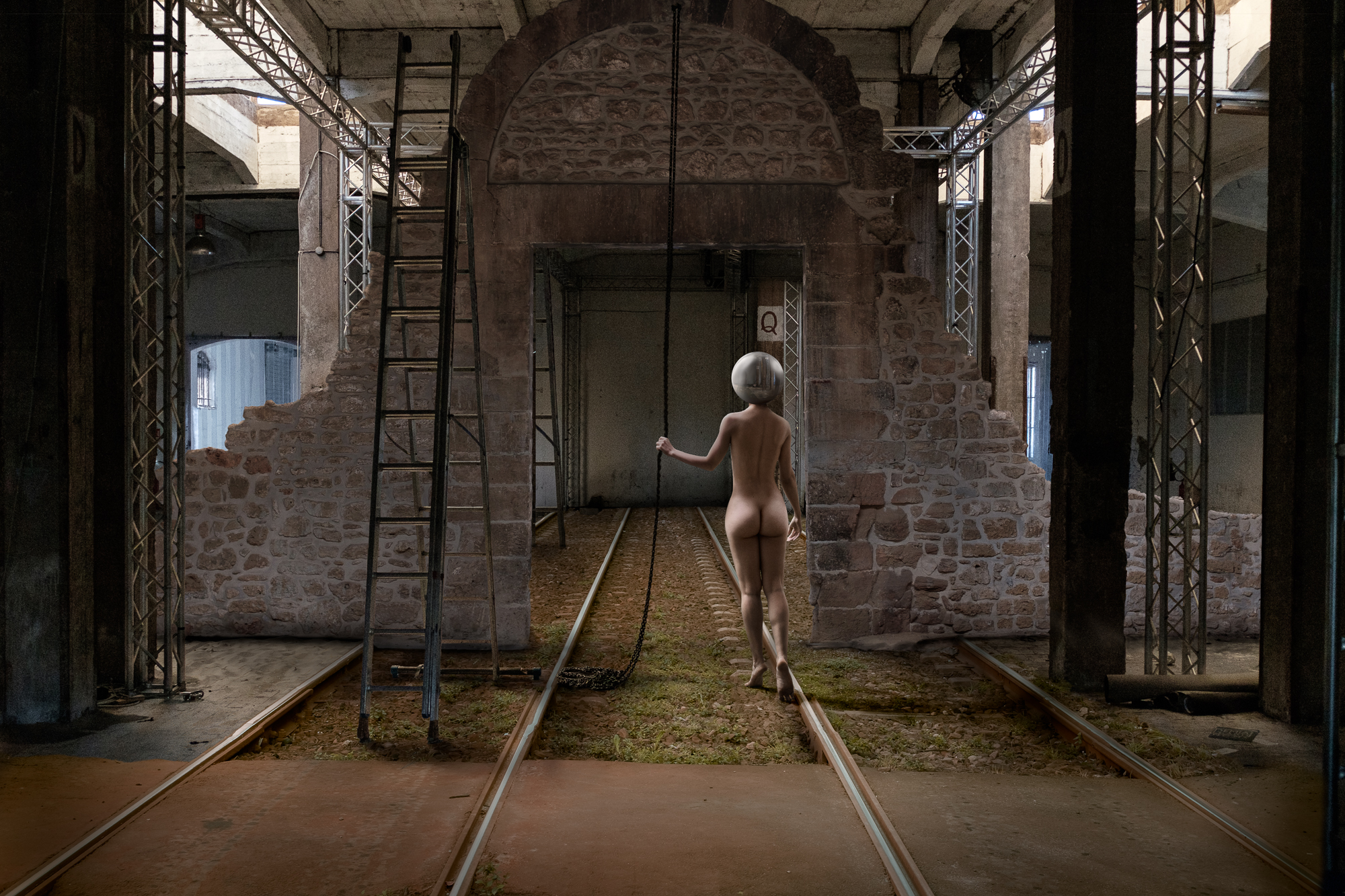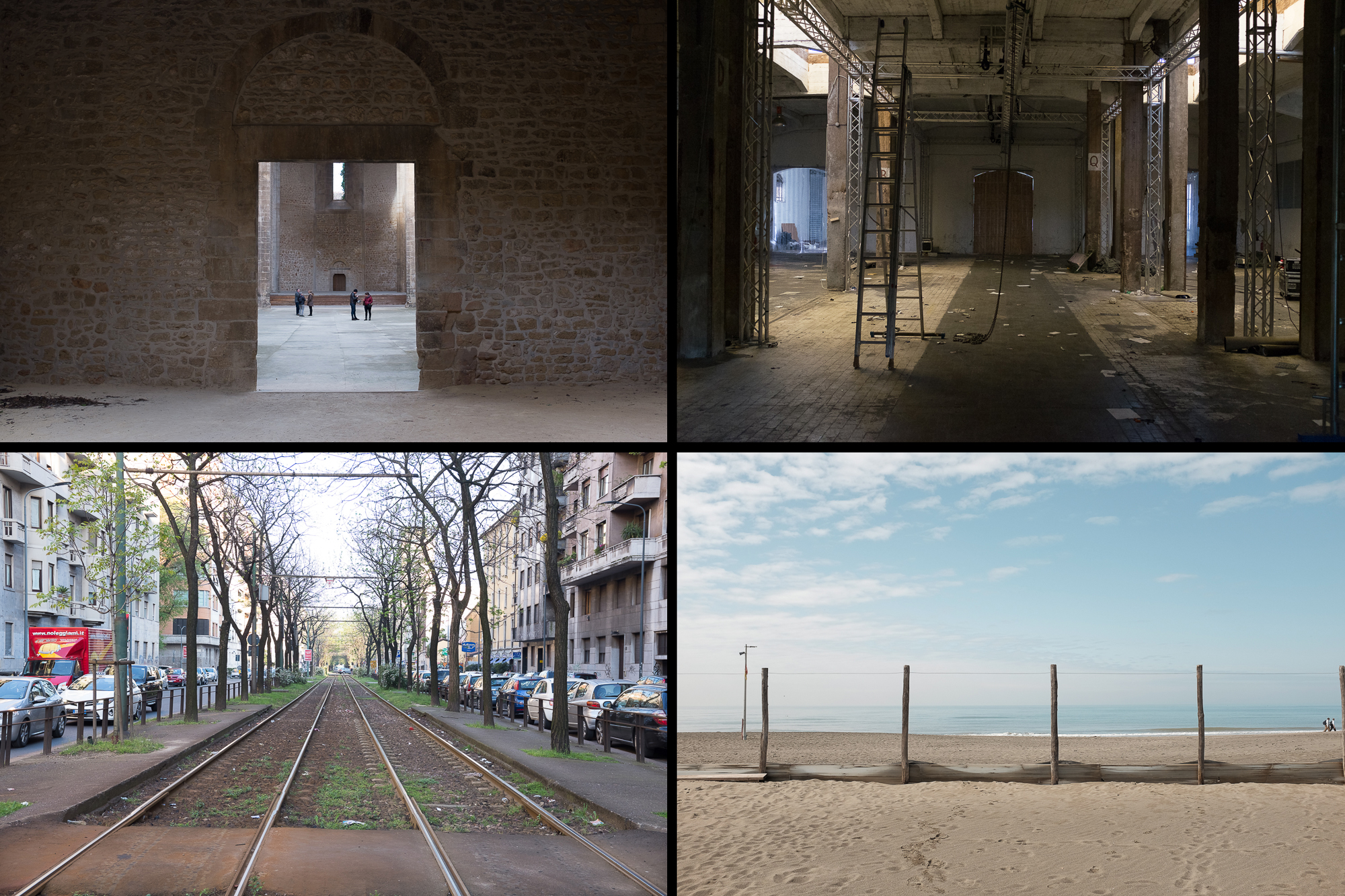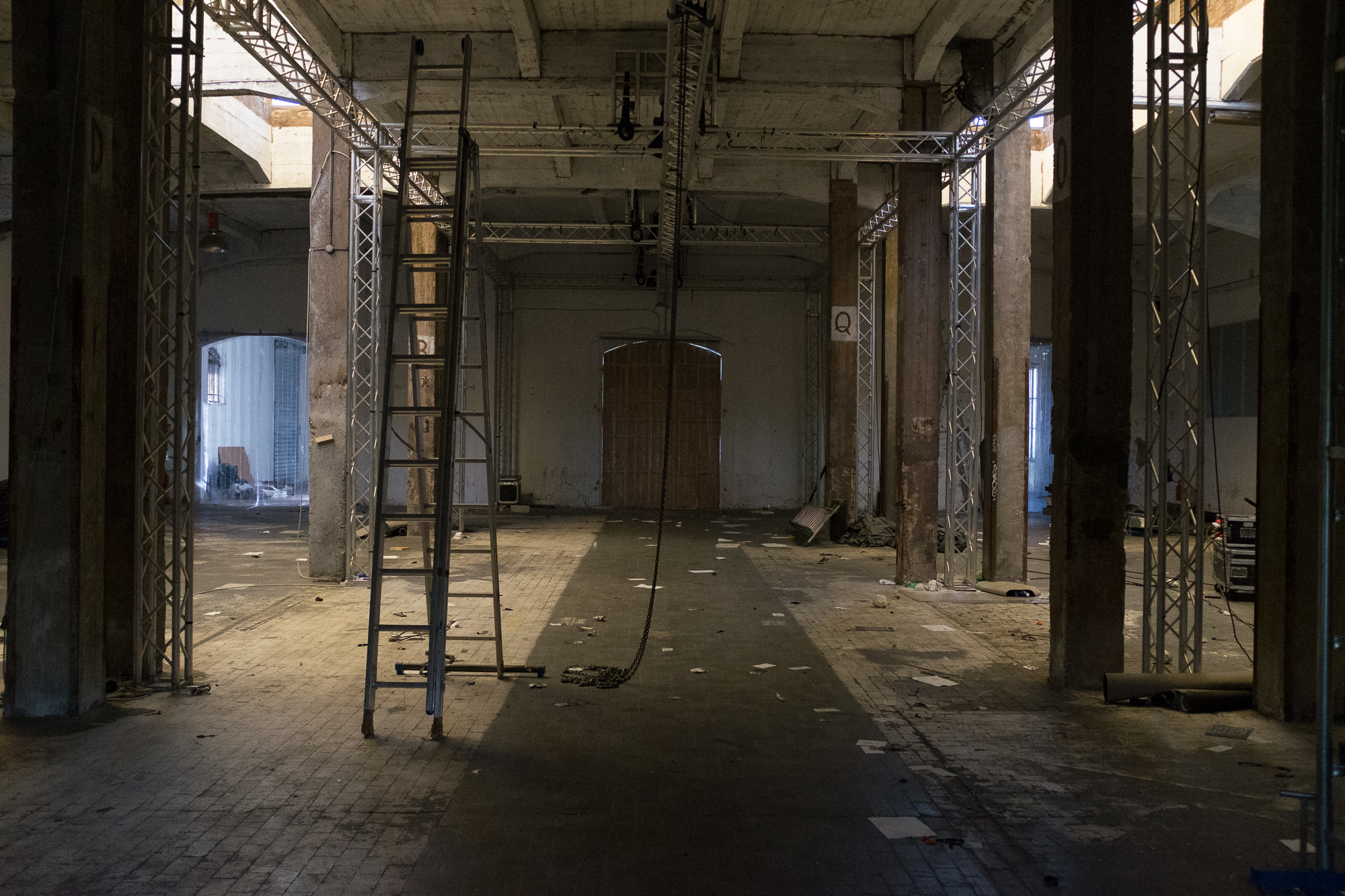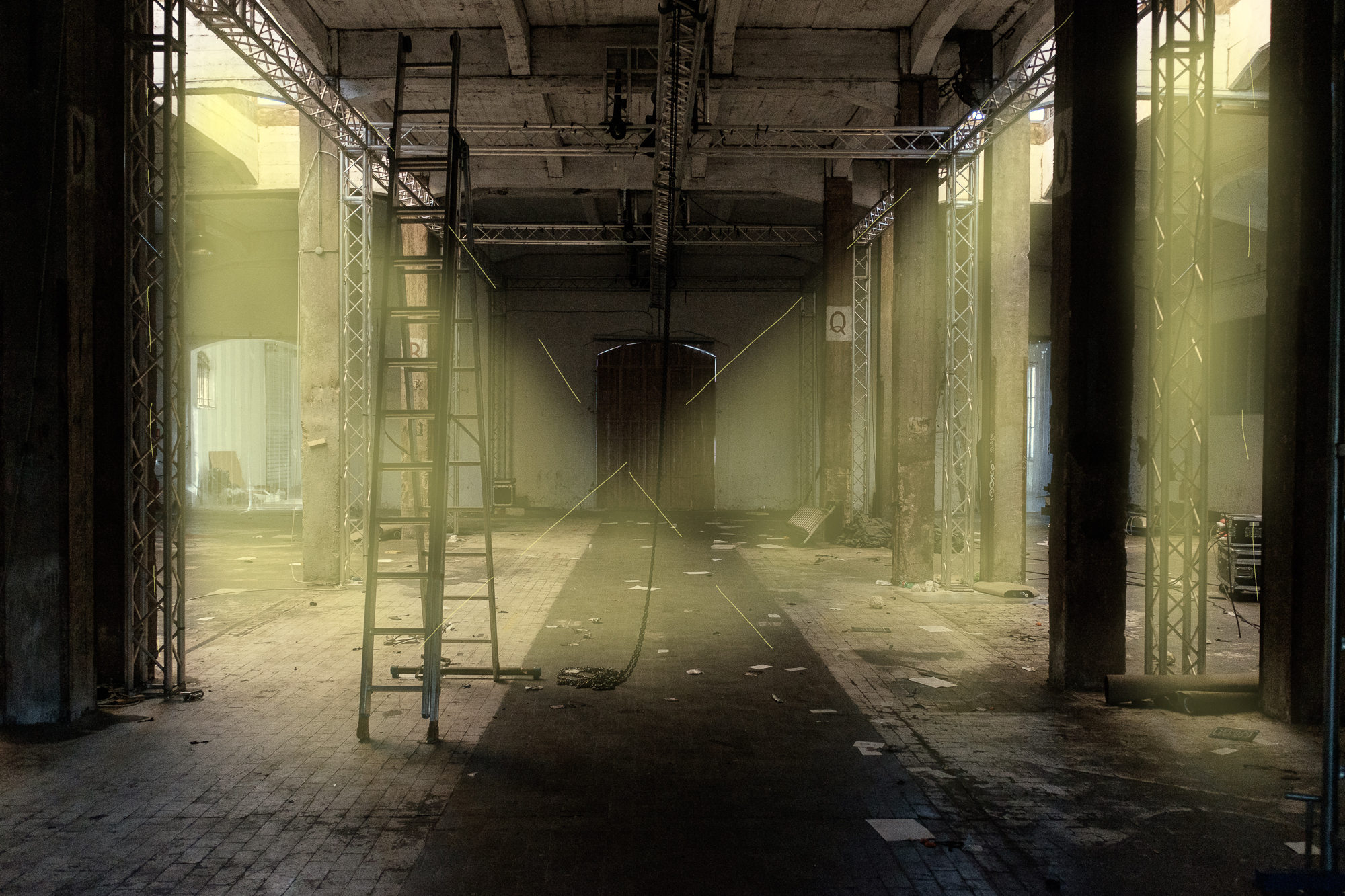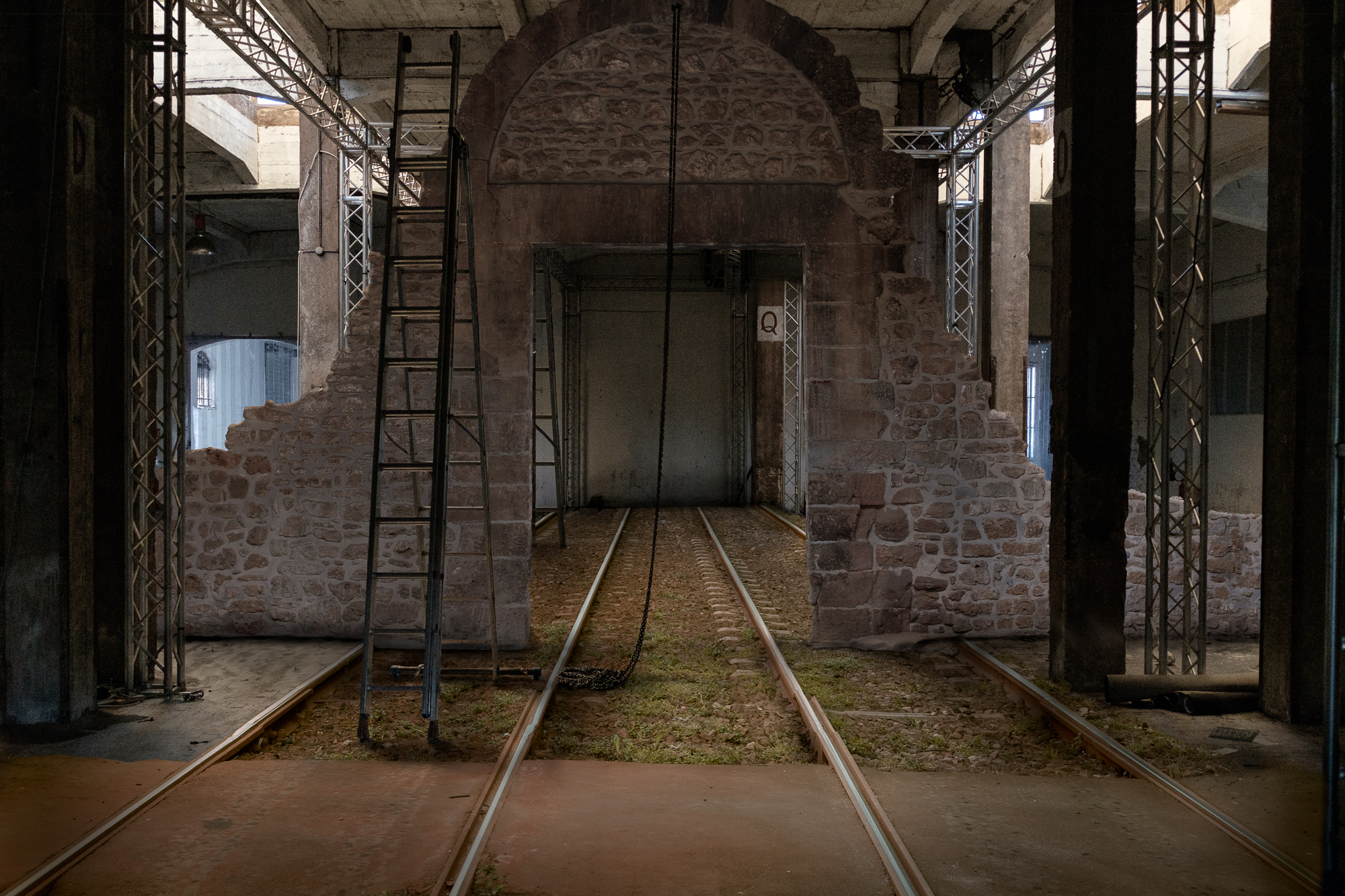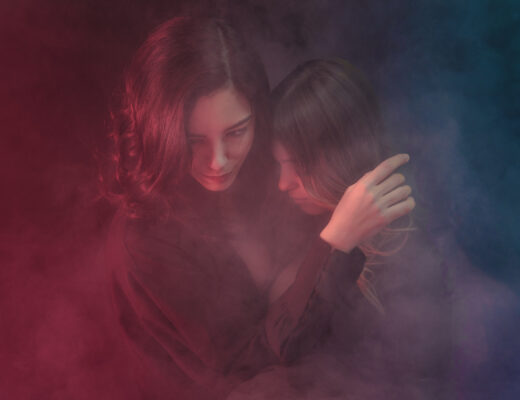It has been a very long since the last time I presented you with one of my compositing works here on FujiLove. Compositing is a technique by which several different photos can be mixed together in order to create something new, artificial, and yet hard to tell from real. The “ingredient photos” can be bought online from image providers such as Fotolia, or shot personally by the photographer. I’m usually prone to the second solution, so I try to keep the X100T with me all the time so when I find interesting spots I can “sample” them in my archive of sceneries in Lightroom.
The ingredients for this article’s opening image, a scene from my series “Anthropocene”, for example, are the hall of an ex-industrial hangar in Rome, the door of an ancient church in Palermo, the rails of a tram in Milan, and the sand of the shore in Fregene. If you look at them you might spot the one thing that I try to keep consistent, the most important one when it comes to compositing: the perspective. All these places have been shot at 35mm equivalent focal length and with the horizon approximately in the middle. Light, colors and noise can be tweaked in post production, but major changes in perspective will always lead to major loss in image quality and resolution.
In this article I’ll walk you through the major steps required to produce such an image. I won’t go, however, into the tiny details of brushes and levels, if you need further info in this respect just write me.
THE HALL
OK, so let’s say I want the underground mood, so I will start from the ex-industrial hall as my level-0 in the Photoshop project. Being the “master scenario”, the hall will lead the game in terms of lights and colors. This means that all the other elements that I’m going to add must be corrected until they share the same light (from left and right above, diffuse and white) and colors (slightly desaturated, brownish). I’ve painted the “gradient” of light on the hall: the yellow areas are illuminated, so whatever happens to get there has to be illuminated, what’s out of it has to be in the shade.
THE ANCIENT DOOR
The most characterizing element in the scene is the ancient door. What was originally a solid stone wall can be transformed into a crumbled ruin just by cutting through its bricks. By carefully masking, it is possible to place the door in the middle of the hall, behind the stairs and some of the trellis. Since the door is slightly before the main lights, it won’t be hit directly, but from behind (brighter perimeter where the light hits) and a bit from what is bouncing on the floor (slight cast of light over the illuminated areas). Being placed between the light and the floor, the door will also cast shadows on the ground, hard ones where it touches, soft ones otherwise.
THE RAILWAYS
Next are the railways. After placing them in the middle, I realize I don’t like how they end in the wooden door, so I put a white wall in its place. I can adjust shadows, lights and colors so the railways blend in with the hall, but you see how important it is that the perspective is the same in the two scenes. The rails “run” towards the end of the hall with the same perspective of the original floor.
THE SAND
Now I can add just a little bit of sand on the left juncture of the wall. It’s not necessary, but it adds a bit of feeling of abandoned and eroded. To do that I use the picture I shot of the shore. Being the perspective about the same, I just place the photo on top of everything and mask-in only where I want it.
The scenery is now ready. It tells the story I want it to tell. Anthropocene refers to the geological era that will be denoted primarily by remains from our civilization (due to the way we transformed landscapes, atmosphere, and waters, and due to the artificial materials we created, like plastic). More generically, however, Anthropocene refers to what will be left of us.
THE GIRL
The model is the young dancer/actress/model Giulia Ramires. I explained her the story, showed her the scenery, and asked her to walk slowly, like wandering, looking around, and to go for the chain with her left hand. I took the shot from the same perspective and at approximately the same distance she would have had if she were really walking through the door. I placed the lights so to softly hit her from her sides, and I placed the green screen behind her.
The last thing I do is the shiny helmet. It is always the last, since it has to reflect all that’s around. As you might guess, the helmet is entirely not-real. To create it I have to make a fake scenery of what’s “on the opposite side”, then I apply the Spherize filter (under Distort) in Photoshop and get the reflection on a circular element. Then I create a grey layer and apply it over the helmet. I start hence to dodge it where the light is supposed to come from, and burn it where the shade is supposed to cast. When I get to a credible sphere of grey metal, I start reducing its opacity, especially in the middle gray areas, so to show the reflections of the underlying layer. A good mix of these techniques produces a credible, shiny, reflective metal helmet over the girl’s head.
The result is the sort of creature I wanted to create. I envisioned those who’ll come after as woman-like creatures, all sharing similar androgenic characters, completely free of malice. They all are at ease with their nudity, but hide their faces behind a helmet, maybe because the air is still unbreathable. They appear to be on Earth on some sort of mission, maybe to discover what happened to humans, or maybe to check if, now that humans are finally gone, Earth can be colonized and become the home of a superior civilization.

